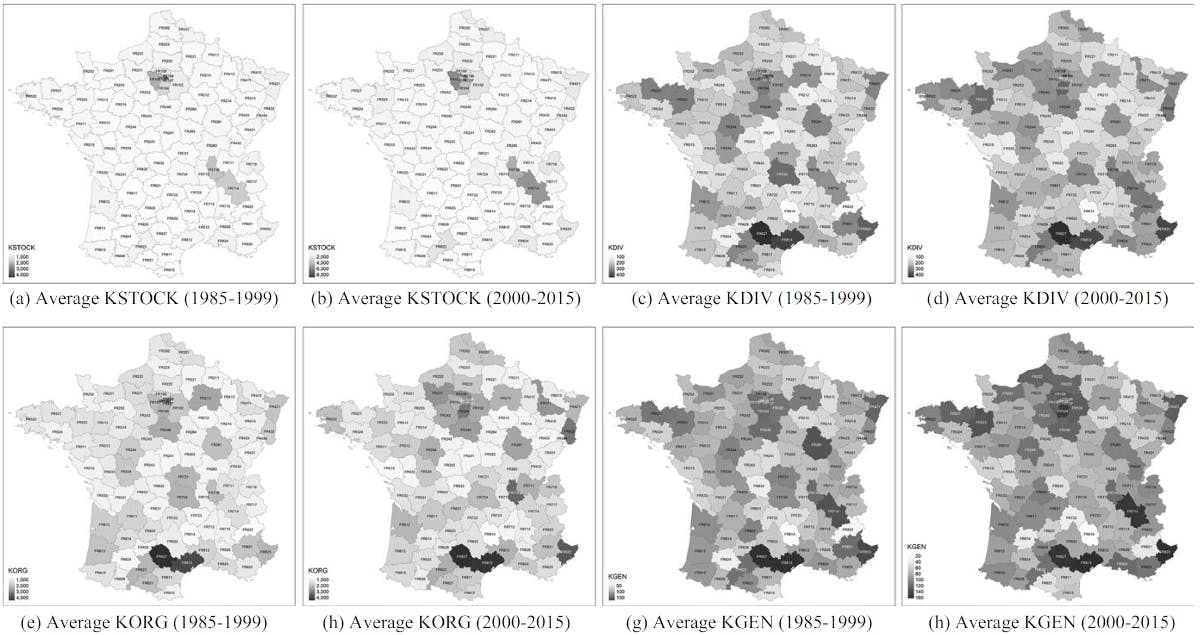Science-Technology Space (SciTechSpace)
The SciTechSpace project has received funding from the Science Foundation Ireland (SFI) under the under the SFI Science Policy Research Programme (grant agreement No 17/SPR/5324).

The objectives of the Science Foundation Ireland (SFI) “Science-Technology-Space” (SciTechSpace) project were to take a significant step forward in unravelling the black box of innovation by addressing critical aspects that remain unexplored, including 1) establishing a link between scientific knowledge production and how this is subsequently translated into technological advancement beyond simple citation counts, 2) a thorough analysis of the complex re-combination activities, which are strongly determined by life-cycle stages, that are essential for the progression of existing domains as well as the development of new ones, and 3) by identifying the potential as well as the limitations associated with the actors (individuals, but also public and private entities) that translate basic science into applied products and processes. In order to address current limitations, the SciTechSpace project utilized the advanced ‘Knowledge Space’ methodology (Kogler et al., 2013; 2017) to analyse the evolution of knowledge domains contained in the relevant scientific literature as well as patents over the past decades. As such, the main objective of SciTechSpace was to investigate the evolution of multi-scalar knowledge spaces with focus on the critical junctures that lead to new development pathways. Parallel to this, SciTechSpace also pursued a multi-dimensional approach where individuals, the entities they are associated with, and the institutional and organizational settings they operate in, were are all considered relevant for the evolution of science-technology and innovation ecosystems. SciTechSpace employed an evolutionary approach and addressed questions pertaining to the production of scientific knowledge, how this impacts upon technological advancement, and what are the structures and mechanisms in which actors and entities aim to support innovation activities and generate novelty. Grounded in the framework of evolutionary economics and the evolutionary economic geography literatures, the project produced theories, methods, and empirics that will significantly advance existing work, push the scientific frontier of innovation research, and develop new planning and forecasting instruments for progressive strategic innovation policy. The insights derived from the SciTechSpace project will be of the upmost strategic importance for regional economies. The specific indicators and sophisticated models SciTechSpace provides, all geared towards ensuring that investments, e.g., public research funding, will be directed to strategic areas where the opportunities are highest, will enable regional economies and nations take a leading role in the advancement of science and technology and thus assist them in the pursuit of ambitious science and innovation policy objectives.
SFI SciTechSpace Concept

SFI SciTechSpace Research Highlights:
Nanotechnology and Knowledge Relatedness:How to Identify Optimal Regional Partners in EU Innovation Networks?
Research & Innovation (R&I) policy initiatives employed by the European Union (EU) across its regional economies are important instruments to ensure the scientific and technological progress along with associated benefits. One relevant aspect in this regard is to encourage and enable collaboration between regional partners to enhance potential learning opportunities and to ensure cohesive long-term development patterns. Furthermore, frequently these initiatives are also targeted at specific technology sectors, such as the EU R&I policy actions towards nanotechnology. Based on an advance theoretical framework and data from the official EU project databases as well as regionalized European Patent Office data, the present study develops a methodological tool through which it is possible to identify effective collaboration settings, while provide policymakers and evaluators with a practical tool that will enable them to predict the possible outcomes of such critical EU funded R&I projects from the onset.
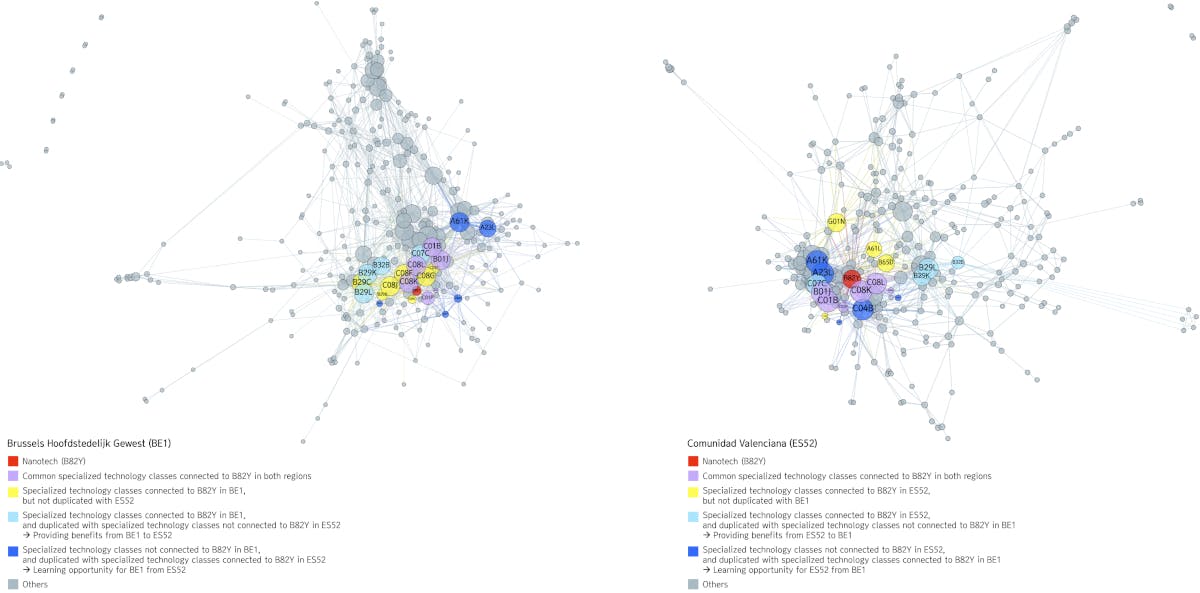
Calignano G., Lee J. and Kogler D.F. (2024) Nanotechnology and Knowledge Relatedness:How to Identify Optimal Regional Partners in EU Innovation Networks? Science and Public Policy. Forthcoming
MIND THE GAP: ADVANCING EVOLUTIONARY APPROACHES TO REGIONAL DEVELOPMENT WITH PROGRESSIVE EMPIRICAL STRATEGIES
Explaining the persistently uneven spatial patterns of development remains a central goal of economic geography and regional science. Recognizing that regional development is a process of ongoing change, many scholars now approach the topic from an evolutionary perspective that identifies knowledge recombination processes and institutions as key drivers of change. However, research has not yet fully integrated the differing theoretical perspectives and empirical data streams that characterize evolutionary approaches. This paper identifies how an evolutionary approach centered on knowledge and institutions could be integrated with complementary forms of evidence gathered from a variety of sources to advance our understanding of regional development. Expanding and integrating the evidence base we use to study regional change has important implications for the making of effective and responsive policy instruments.
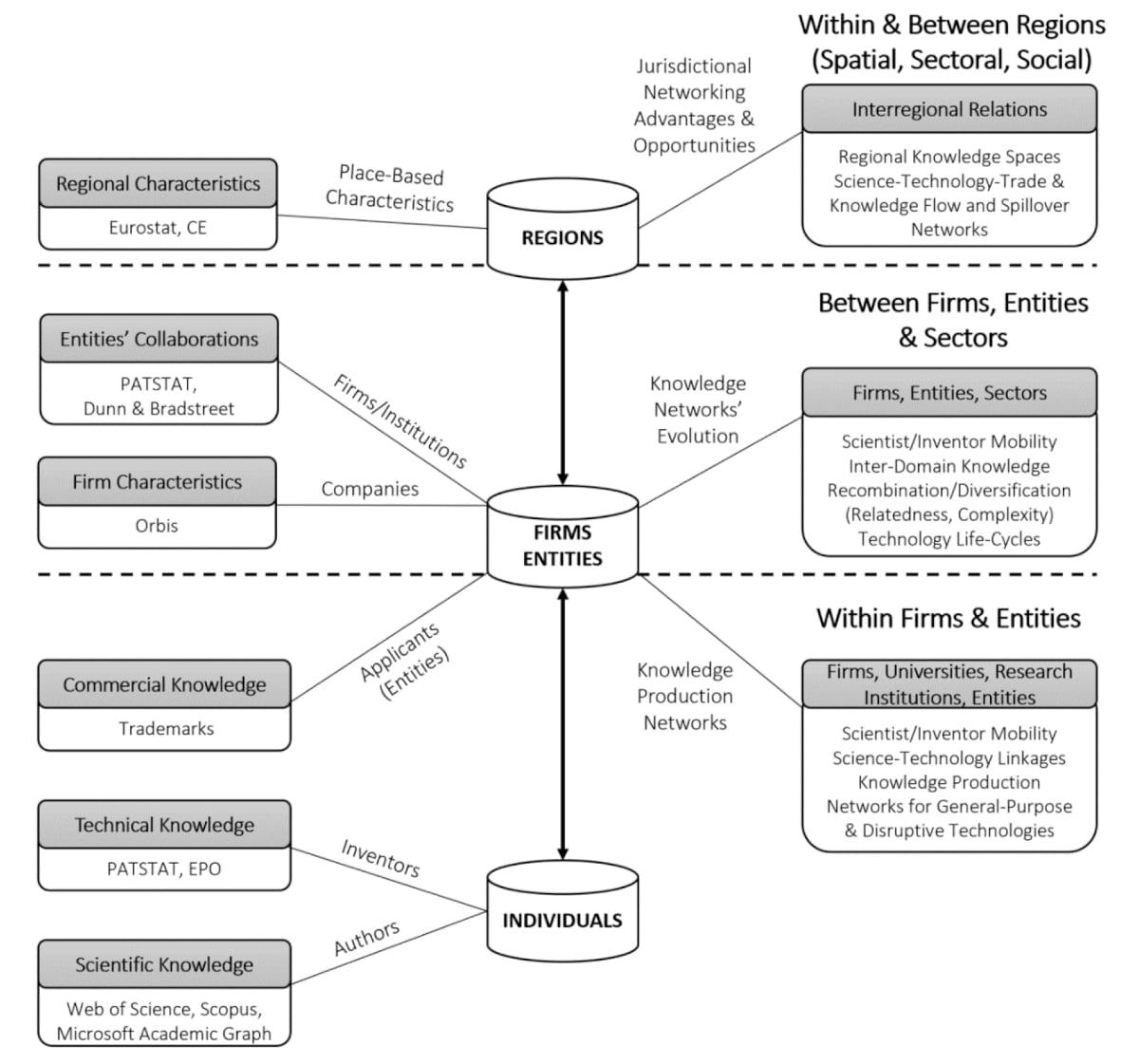
RELATED TO WHAT? REVIEWING THE LITERATURE ON TECHNOLOGICAL RELATEDNESS: WHERE WE ARE NOW AND WHERE CAN WE GO?
The objective of this paper is to critically review contemporary insights derived from studies that focus on relatedness. A well‐established body of literature has identified three approaches for measuring relatedness, those based on co‐occurrence matrices, industrial hierarchy and resource similarity. From these measures, several authors have begun developing relational networks to capture the branching capabilities of products, industries, technologies and skills. Thereafter the present contribution then shifts from analysing ‘what is’ and begins considering what ‘could be’? It argues that the concept of relatedness lies at the heart of deconstructing issues of unrelated diversification and smart specialisation.
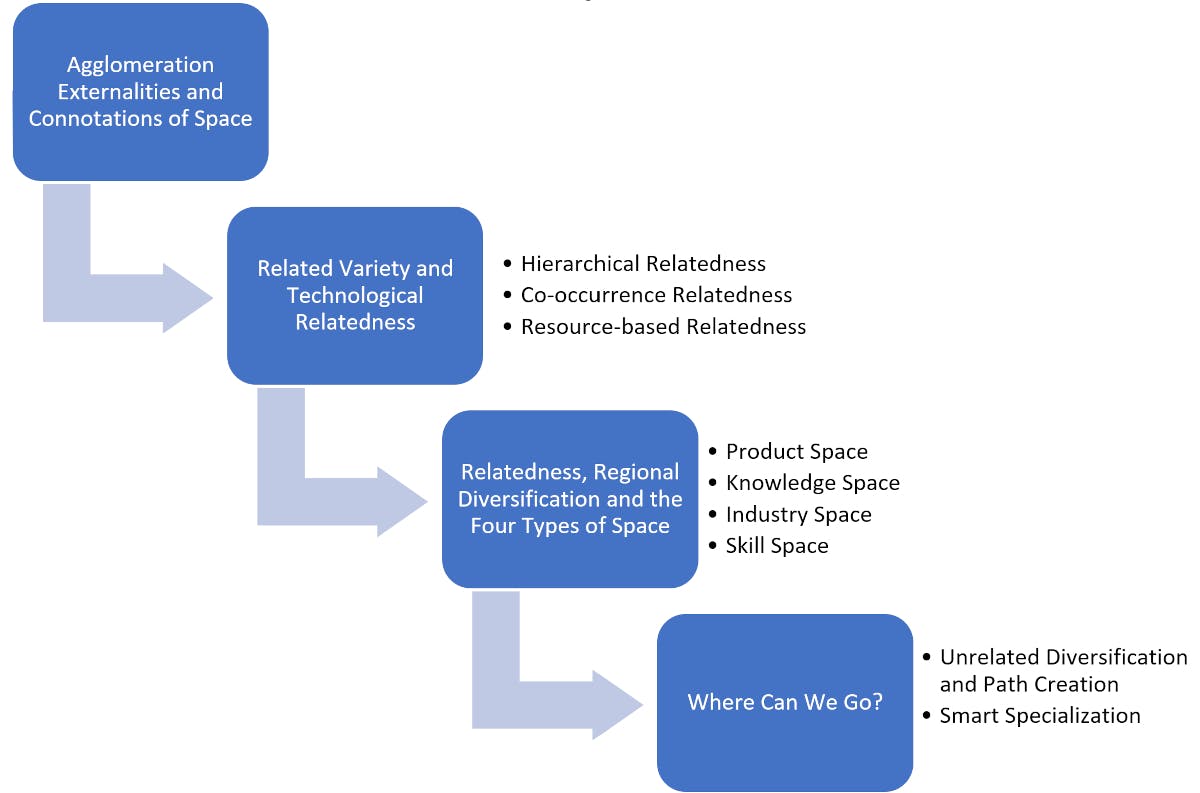
Whittle, A. and Kogler D. F. (2019) Related to what? Reviewing the literature on technological relatedness: Where we are now and where can we go? Papers in Regional Science 99(1): 97-113.
SCIENTIFIC COLLABORATION, RESEARCH FUNDING, AND NOVELTY IN SCIENTIFIC KNOWLEDGE
In this project the focus is on publications' novelty as an indicator of scientific advancement with regard to collaboration and funding patterns. First, we investigate the relationship between collaborations and novelty in publications. Novelty in scientific publications often incorporates new ideas and opportunities from interdisciplinarity across heterogenous research groups to solve practical problems. Interdisciplinarity, which results from scientific collaboration, is believed to bring out new research outputs, and thus it is reasonable to expect some correlations between collaboration and novelty measures. To the best of our knowledge, however, only few studies have examined the relationship between scientific collaborations and novelty. Specifically, we examine collaborations at the country and various sub-national, i.e. regional, as well as the institutional levels. We measure novelty of articles with keywords' information. Finally, we evaluate the role of funding in research novelty.
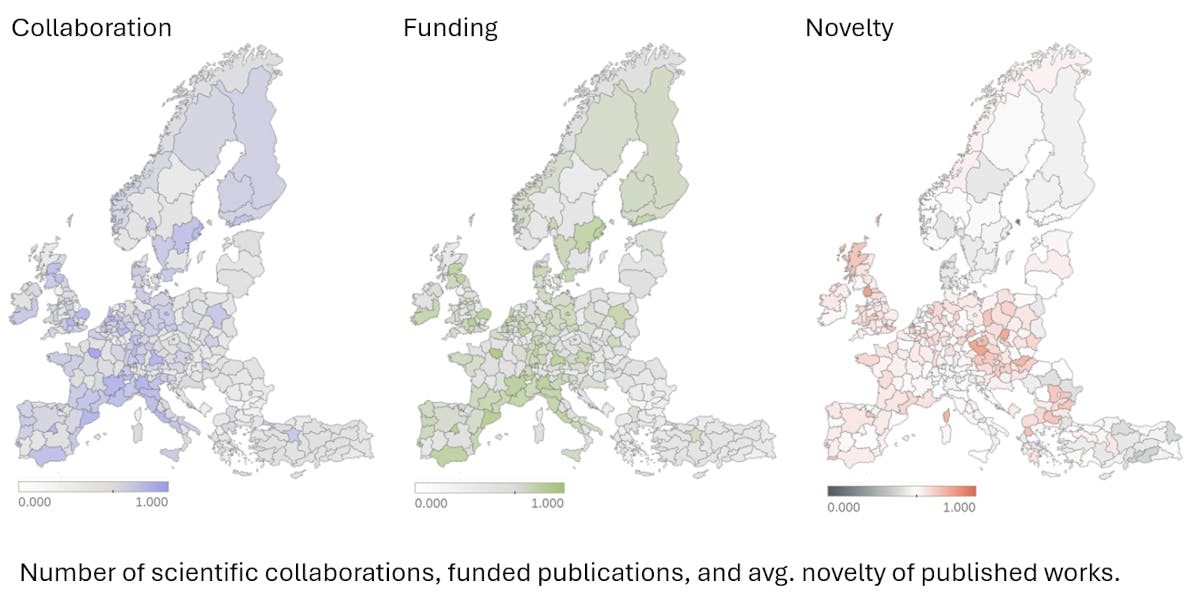
DO EU REGIONS BENEFIT FROM SMART SPECIALISATION PRINCIPLES?
Smart Specialisation was conceived as a ‘bottom-up’ framework to identify new growth paths connected to knowledge cores within regions. Although operationalization of Smart Specialisation has proven difficult, recent mappings of technologies in terms of technological relatedness and complexity suggest a useful cost–benefit framework. We extend these ideas, locating European Union cities in a Smart Specialisation space and tracking their development of technology since 1980. Results indicate that European Union cities with the largest gains in complex and related technologies enjoy an economic performance premium over cities with smaller gains in the complexity and relatedness of their knowledge bases.
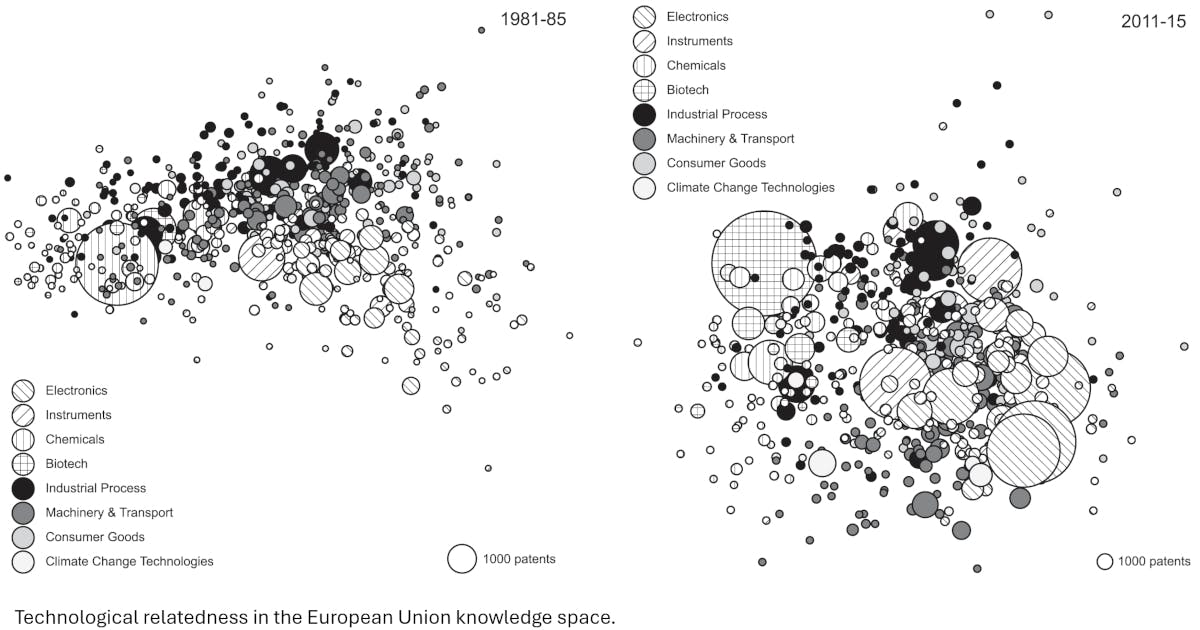
THE RELEVANCE OF SCIENTIFIC KNOWLEDGE EXTERNALITIES FOR TECHNOLOGICAL CHANGE AND RESULTING INVENTIONS ACROSS EUROPEAN METROPOLITAN AREAS
Contrary to perceptions in which technological development proceeds independently of scientific research, the interplay between science and technology has been recognized as an essential part in technological change, industrial competitiveness, and economic growth. While the process of knowledge exchanges between the nexus is conceptually well grounded in relevant literatures, the absence of quantitative measures and assessments of such linkages may underestimate the importance of scientific knowledge inputs for generating high-impact innovative outcomes. In this regard, we propose a large quantitative analysis on knowledge externalities from science to technology by investigating patent citations to science data across European metropolitan regions.
First, we construct a dataset of patent citations to scientific knowledge that includes information on the spatial origins of knowledge spillovers. Subsequently, the ratio of internal scientific knowledge sourcing to external sources and its effect on patent citation impact is evaluated. Findings suggest that regions with a higher reliance on their internal scientific resources tend to generate inventions with higher technological impact, and that a strong connection between science and technology is even more effective in advanced industrial regions.
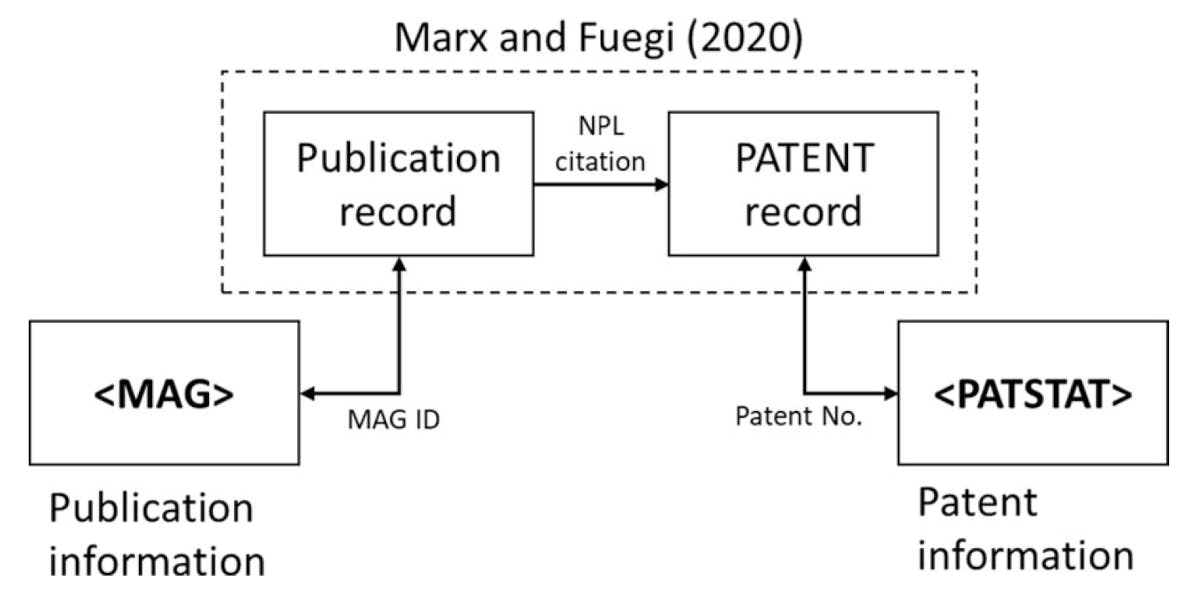
OK COMPUTER: THE CREATION AND INTEGRATION OF AI IN EUROPE
This paper investigates the creation and integration of Artificial Intelligence (AI) patents in Europe. We create a panel of AI patents over time, mapping them into regions at the NUTS2 level. We then proceed by examining how AI is integrated into the knowledge space of each region. In particular, we find that those regions where AI is most embedded into the innovation landscape are also those where the number of AI patents is largest. This suggests that to increase AI innovation it may be necessary to integrate it with industrial development, a feature central to many recent AI-promoting policies.

THE SCIENCE SPACE OF ARTIFICIAL INTELLIGENCE KNOWLEDGE PRODUCTION: GLOBAL AND REGIONAL PATTERNS, 1990-2016
The present contribution seeks to map the development of Artificial Intelligence (AI) knowledge as indicated through scientific publications. A set of principal keywords is employed in order to identify those publications that are related to AI in the Web of Science and the metadata provided by the database is then utilized to map the evolution of the field across different scales, i.e. the national, country and regional level. This analysis allows for the identification of potential AI “hotspots”, while also establishing places that have been leading in the development of AI knowledge from the onset vis-à-vis those that have managed to catch up over time.
In addition, a network that illustrates international collaborative efforts in AI knowledge creation via co-authorships across nations and via the evolution of keywords’ co-occurrence across three decades is illustrated. It is evident that these networks have become denser with time, and that they have changed across regions. The objective of the present analysis is to enhance our understanding about where and how scientific AI knowledge is created, which in turn should encourage and assist future research efforts looking to study AI knowledge and its consequences.
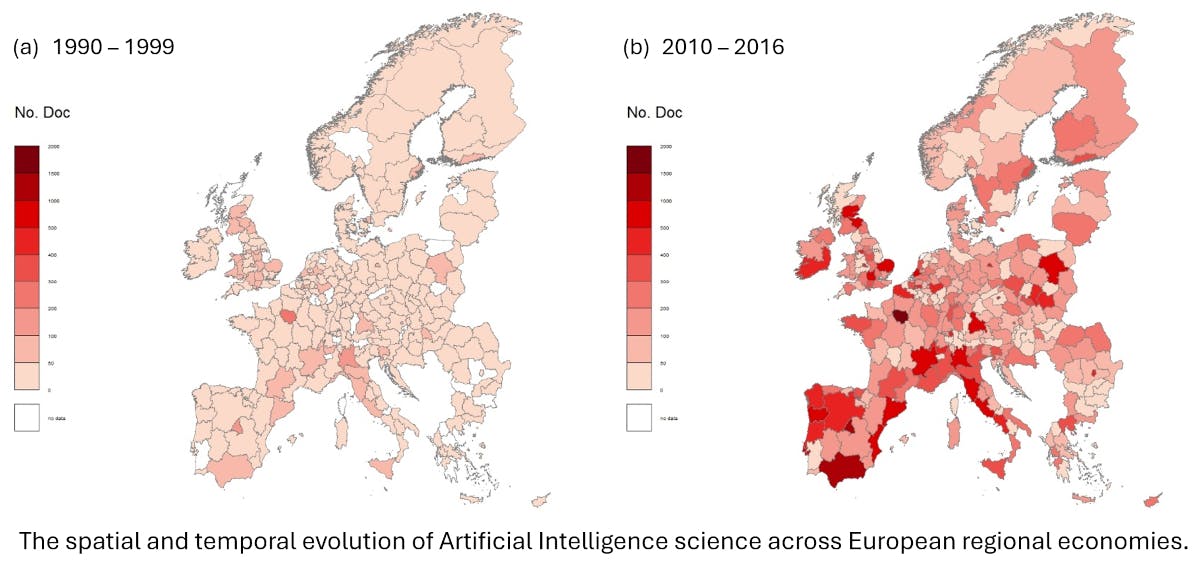
NEW COLLABORATIONS AND NOVEL INNOVATIONS: THE ROLE OF REGIONAL BROKERAGE AND COLLABORATION INTENSITY
In this paper, we investigate the role of brokers in the regional innovation network and its influence on innovative and collaborative outcomes. For this purpose, we make use of data from the European Patent Office and Eurostat in the period 1986–2015. We first build the regional collaboration network based on co-inventorship ties, and then we identify the brokerage roles played by each region, using the original taxonomy proposed by Gould and Fernandez (1989), to disentangle their impact on innovation and collaboration. Finally, we investigate regional collaboration intensity and how it interacts with brokerage roles, highlighting its mediating effect. Our findings indicate that brokerage roles contribute to the extension of collaboration networks, but also that they are not efficient for the creation of innovation. Collaboration intensity, on the other hand, enhances both innovation and collaborative outcomes and shows how a region can benefit from being a broker.

THE ROLE OF MNES IN THE GENESIS AND GROWTH OF A RESILIENT ENTREPRENEURIAL ECOSYSTEM
This article reports on a longitudinal process study of the critical role of anchor MNEs in the metamorphosis of a high-tech industrial cluster into a local entrepreneurial ecosystem. It draws on entrepreneurial ecosystem and international business literatures to frame the study of the genesis and evolutionary processes of an entrepreneurial ecosystem that emerged from two MNE subsidiaries, both of which had evolved into advanced R&D centres of excellence around a technology specialism. It shows how multiple new venture spinouts by former MNE employees introduced technological heterogeneity that catalysed into a resilient entrepreneurial ecosystem. The theoretical and policy implications that can be drawn from this case study emphasise the existence of both technology specialism and heterogeneity for resilience in an entrepreneurial ecosystem, and that reaching such a position is evolutionary in nature.
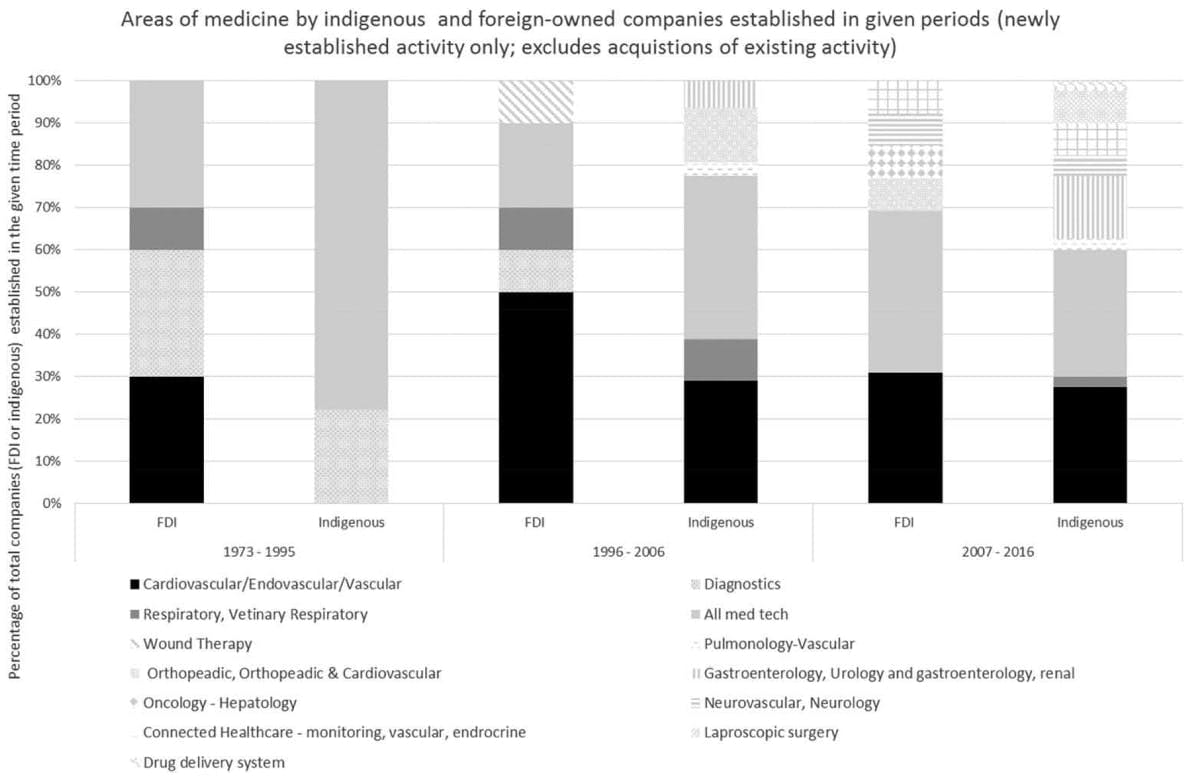
REGIONAL KNOWLEDGE CAPABILITIES, ENTREPRENEURIAL ACTIVITY, AND PRODUCTIVITY GROWTH: EVIDENCE FROM ITALIAN NUTS-3 REGIONS
Knowledge has replaced labor as the key factor for productivity growth in innovation discourse. The Knowledge Spillover Theory of Entrepreneurship (KSTE) provides the theoretical foundation to bridge the gap between knowledge and productivity growth. The way regional knowledge actually contributes to productivity growth requires a theoretical explanation because knowledge capability is an indirect and intangible input for regional productivity growth. Previous research has shown that entrepreneurship alone is insufficient to drive productivity improvements. We examine how knowledge capabilities lead to meaningful growth outcomes of new firms in a region.
This study examines the determinants of productivity growth by analyzing the factors of entrepreneurship and knowledge capabilities at the regional level, especially considering the moderating effect of entrepreneurship between knowledge and regional growth; by comparing different dimensions of local knowledge capabilities; and by aggregating the contribution of knowledge capabilities and entrepreneurship to productivity growth at the regional level.
The empirical analysis is performed on Italian NUTS-3 regions by utilizing an integrated data set combining patent data from the EPO PATSTAT database, and regional data from Eurostat regional statistics. This study makes two main contributions to the KSTE literature by linking knowledge, entrepreneurship, and regional growth and by providing empirical results on different aspects of regional knowledge capability. Our findings identify which types of local knowledge capabilities are more important and how related innovative activity interacts with entrepreneurial activity, elucidating the mechanisms by which knowledge affects labor productivity through entrepreneurship.
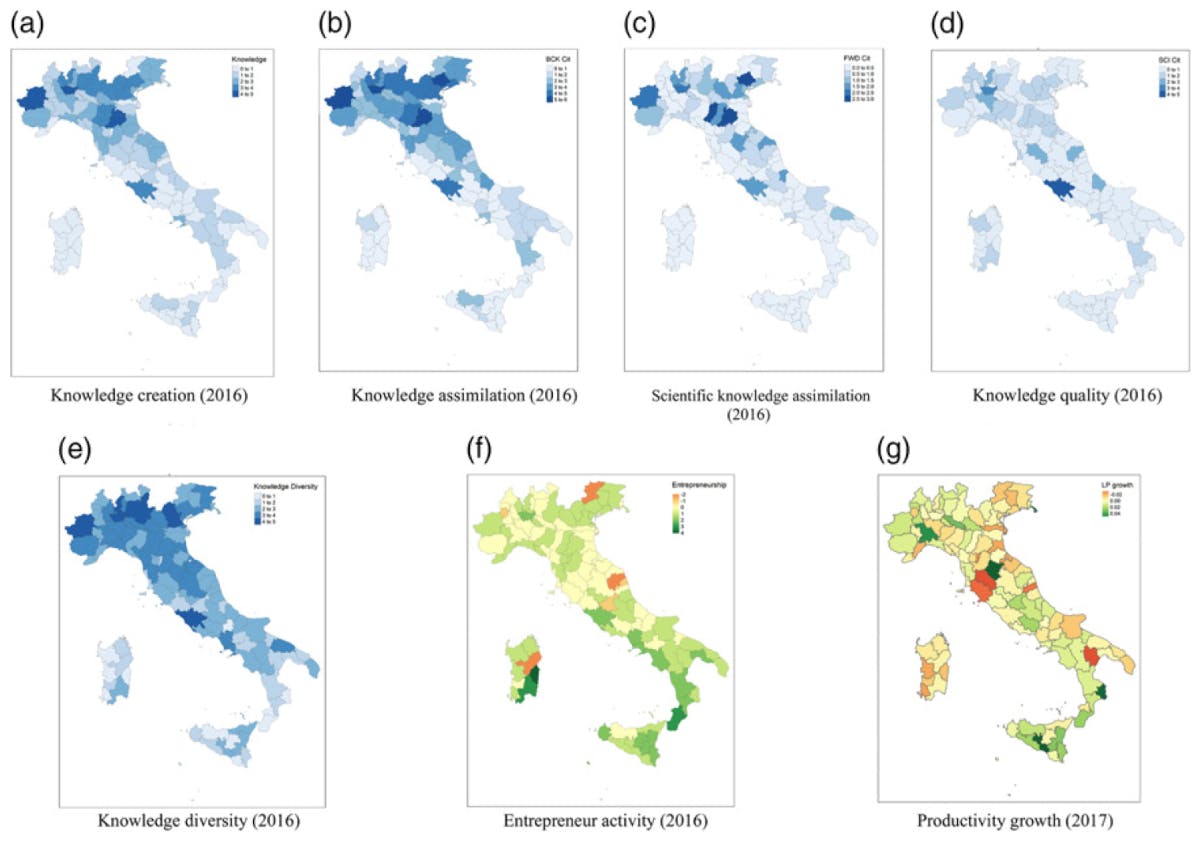
CHANGES IN REGIONAL KNOWLEDGE BASES AND ITS EFFECT ON LOCAL LABOUR MARKETS IN THE MIDST OF TRANSITION: EVIDENCE FROM FRANCE OVER 1985–2015
In the 2000s, the European labour market experienced a number of significant changes including the transition to a more knowledge-intensive economy as well as the introduction of various economic policies (e.g. Eurozone, subsidized jobs, and social tax cuts). In times like these, the role of knowledge, which is essentially the driving force of innovation and thus promoting technological change and economic growth, is shifting due to new labour market conditions. The present study aims to explore how processes of local knowledge bases have been altered in this transformative environment and how these have impacted on local employment growth.
The investigation considers three different knowledge bases in conjunction, incl. knowledge size, knowledge creation, and knowledge application. The study is based on an econometric analysis of a panel of 94 France NUTS-3 regions covering the period 1985–2015, utilizing patent data from European Patent Office (EPO) Statistical Patent Database (PATSTAT), and regional data from European Regional Database (ERD). The result shows that the role of knowledge for employment growth has indeed changed towards more specialized inputs in applications while the importance of greater knowledge size remains still important.
